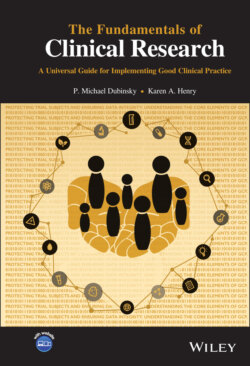Читать книгу The Fundamentals of Clinical Research - P. Michael Dubinsky - Страница 40
3.2.1 Discovery
ОглавлениеThe first decision point in drug development is deciding to try and find a cure for or prevention of a disease. Medical researchers may pursue drug discovery based on learning about a disease process in a way that allows new approaches to slowing the disease down or possibly curing it. In the United States, there are government and nongovernmental organizations that pursue new cures and treatments for disease and injury for a variety of reasons. Profit‐based decisions are often seen as the driving force behind seeking new and/or innovative treatments or procedures but that is probably not the primary driving force in place at early stages of discovery. One approach that has been successful is called repurposing [1]. Commercial industry and research‐oriented academic institutions have been finding new applications for already approved or tested medicines. This approach to drug discovery has identified a number of innovative pathways. E.g. new uses for existing drugs, new uses for drugs whose development was cut short; and identifying side effects from tested drugs which may indicate useful new applications. Using scientific methods such as genetic testing also allows researchers to target a drug to a specific site in the human body thereby increasing drug efficacy. Repurposing existing drugs is also economically rewarding. One of the possible stumbling blocks encountered when pursuing this approach is when data and records from prior studies need to be resurrected for review and use in assessing the overall history of the drug’s use in trials. If that data was not collected in conformance with GCP and other Good Practices (GXP) its use may be limited and may stand in the path of pursuing a new application. My experience in this regard was when a firm wanted to use data from studies which were performed 14 years prior. Not only were the records questionable in terms of completeness but the ability to demonstrate that the data was collected in conformance with good clinical practices and/or the applicable regulatory requirements was not clear.
